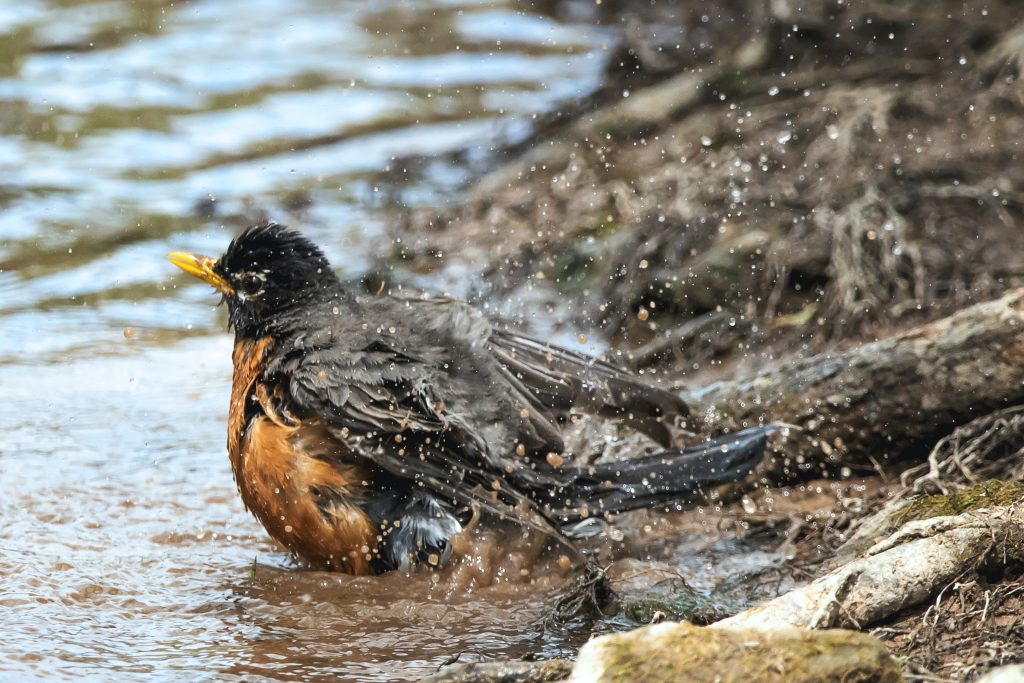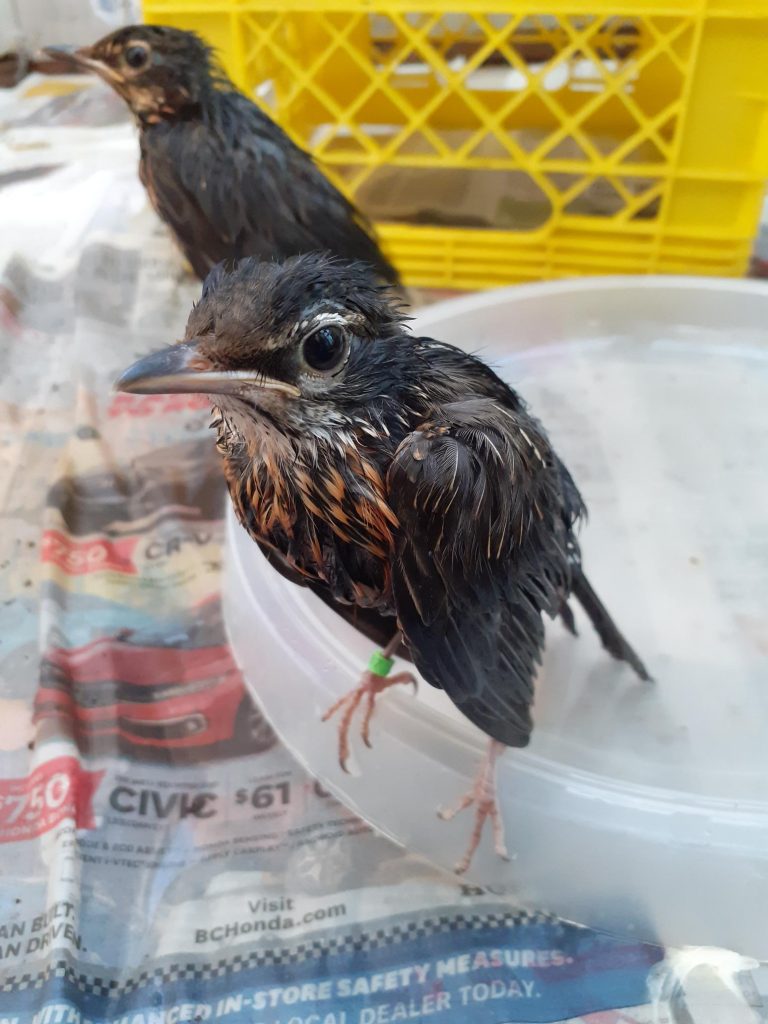Support Us
Since 1979 more than 140,000 animals have been treated by Wildlife Rescue.
Thanks to the support of individuals like you, Wildlife Rescue can provide a lifeline for animals in distress.
Every July and August, “Gull Season” occurs in the Lower Mainland of British Columbia. Gulls like to nest on flat rooftops in Vancouver. To stay close to their main food source of fish, gulls will nest in areas near water. These rooftop sites are typically safe from predators – humans included!
During hot weather events, you can help wildlife out by putting out a birdbath for them to cool off in and drink! Don’t have a birdbath? A shallow dish, such as a plant saucer, will suffice!
For their safety, please ensure that:
Offer shade using what you have available:
Did you know that birds lack the ability to sweat?! So how do they stay cool during these HOT summer days?
Birds have developed their own mechanisms for keeping cool, such as panting, puffing up their feathers, and fluttering their wings. They also like to do what we humans like to do – splash around in the water to cool down!
For wildlife in an urban setting, water and shade may be limited. Help wildlife stay cool by providing a safe, shallow, source of water. Keep an eye out for all types of wildlife seeking water bodies in unusual places, such as pools and water fountains, which can trap and potentially drown the animals.

Very few animal species can sweat, so animals struggle to lose excess body heat during extreme weather events. Heat stress can cause animals to have difficulty breathing which may appear as panting, an increased respiration rate, loss of appetite, and drooling.
Signs of overheating in birds include panting, open-mouth breathing, fluffed-up, and lethargy. Some nestlings may jump from their nest due to overheating, and fledglings may wander away from their parents in search of water. Dehydration is a big concern during hot days. If you find a bird that is easily approachable (won’t fly off when approached), looks sleepy (lethargic), is fluffed up, or has any visible injuries or blood, please contact our Support Centre for assistance.
Signs of Heat Wave Induced Distress:
If you find wildlife in distress, please contact our Support Centre at (604) 526-7275. Please be aware that on busy days, our helpline staff and volunteers can have a backlog of calls exceeding two hours. If the situation is dire, follow instructions on this page on how to safely contained an injured animal.
Here at Wildlife Rescue, we work hard to keep all of our patients comfortable during these uncomfortably hot days by providing…

Finding a flightless baby crow is totally normal between late May and July. It does not imply that it has been abandoned or fallen out of the nest. If you come across a baby crow on the ground, stop, take a step back, and observe before intervening!
So you’ve found a baby bird… now what?
Is the bird hurt? Are there any visible injuries or blood? Is it cold, weak or lethargic? Has it been attacked by a predator? If so, call our Support Centre immediately at (604) 526-7275 for directions on how to safely bring the bird in.
If it is not obviously injured, assessing the age of the bird can help determine the next steps.
What are the best techniques for maintaining my hummingbird feeder in the winter? What exactly is torpor and how do I know when a hummingbird is in distress?
Canada Geese mate for life and will return to the same location to nest year after year. The lack of available natural nesting sites has resulted in Canada Geese nesting on rooftops, even in busy urban environments. Here are some commonly asked questions regarding Canada Goose nesting season.
Wildlife Rescue is currently admitting record-breaking numbers of Pine Siskins showing symptoms of Salmonella infection. Here are some commonly asked questions regarding this outbreak answered!